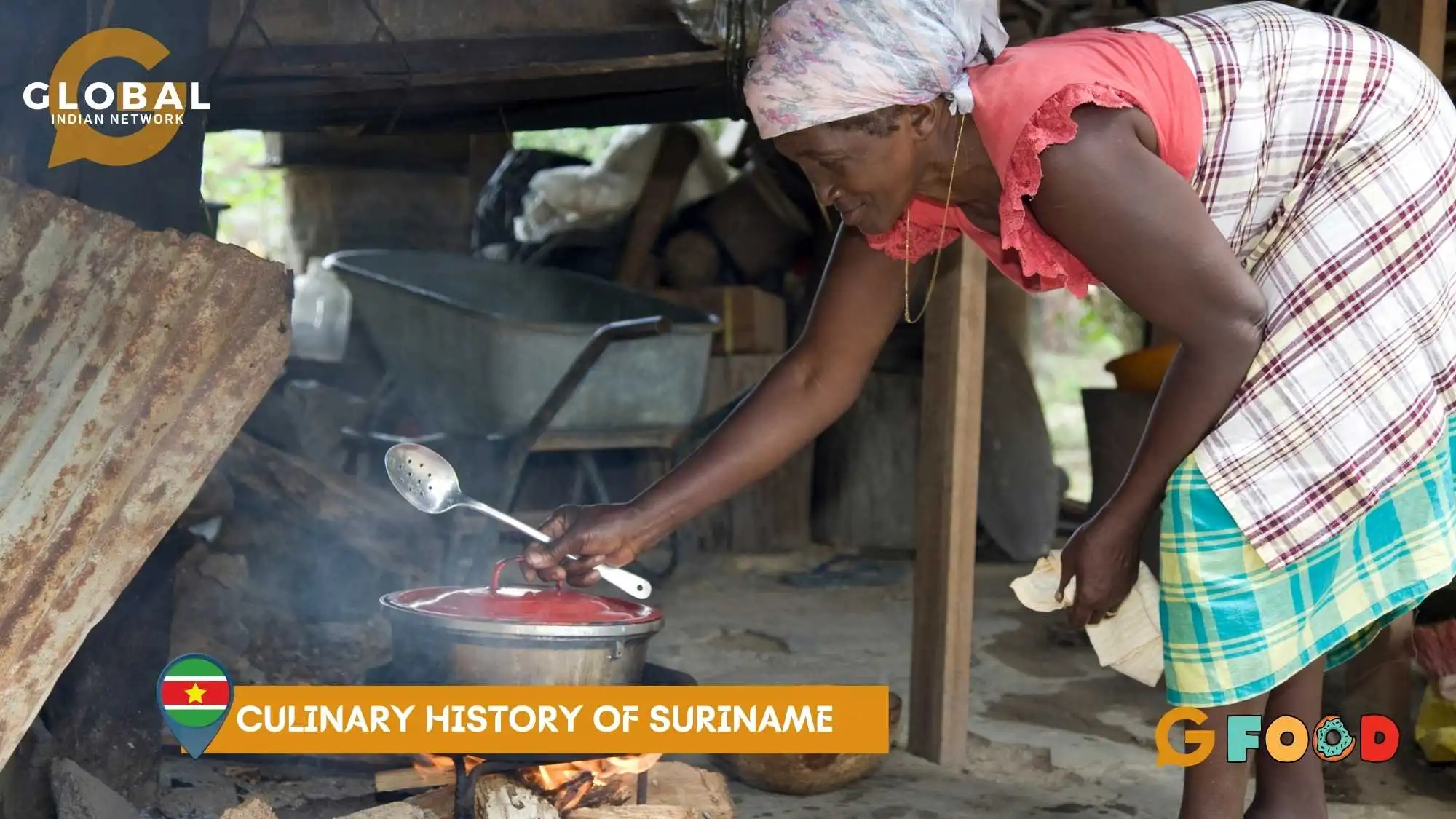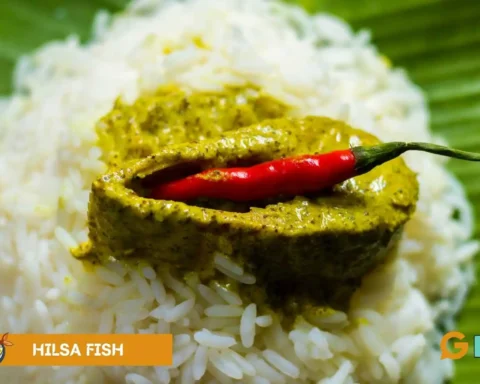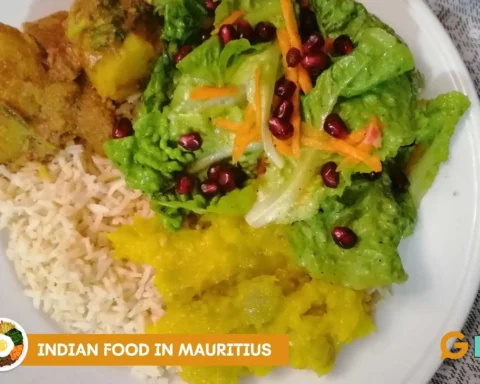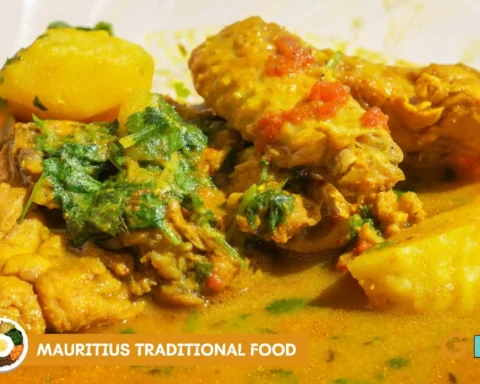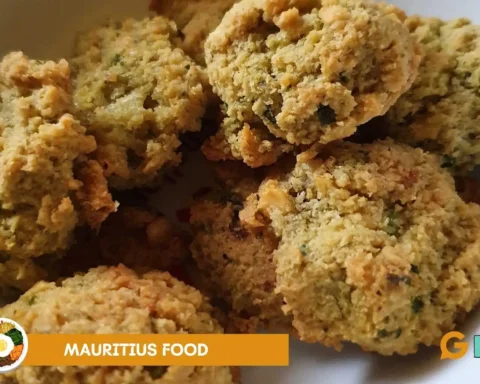Suriname, a beautiful gem on the northeastern coast of South America, has a unique and rich culinary heritage.
The unique flavours and dishes found in Surinamese cuisine have been profoundly influenced by migration. They showcase a blend of indigenous traditions, African roots, and the impacts of various immigrant communities.
Read on to learn more about the culinary history of Suriname and how different cultures and peoples have shaped its vibrant food landscape.
Table of Contents
The Influence of Indigenous Cultures on the Culinary History of Suriname
Before the arrival of European colonizers, the land that is now Suriname was inhabited by various indigenous peoples.
These communities utilized the region’s abundant natural resources to create a variety of traditional dishes centred around local ingredients. The use of root vegetables like cassava, sweet potatoes, and various tubers formed the foundation of their diet.
These ingredients remain integral to Surinamese food today and are featured in popular dishes such as cassava bread and cassava cake.
The indigenous cultures also laid the groundwork for cooking techniques and flavour profiles, employing methods like baking in clay ovens or wrapping food in leaves for steaming. These techniques have persisted over centuries, enriching the culinary traditions of Suriname.

The Impact of Colonial Rule on the Culinary History of Suriname
The Dutch colonization of Suriname in the 17th century significantly changed its culinary landscape.
The establishment of plantation colonies led to the importation of enslaved Africans to work on sugar and coffee plantations. The arrival of enslaved Africans introduced a wealth of culinary practices and ingredients that would profoundly influence Surinamese cuisine.
African traditions emphasized communal eating and the use of spices, which became a hallmark of Surinamese dishes. One of the most famous examples is Peanut Soup, a dish that combines the nutty flavour of peanuts with various seasonings, showcasing the deep-rooted influence of African flavours.
The introduction of spices such as pepper, nutmeg, and ginger, coupled with coconut milk from local coconuts, transformed the flavour profiles of many Surinamese foods.
The 19th Century of Suriname
The 19th century marked a pivotal moment in Suriname’s history with the arrival of diverse migrant labourers. After the abolition of slavery in 1863, a mix of Javanese, Chinese, and Indian workers was brought in to meet labour demands on plantations.
Each of these communities contributed its culinary heritage to the Surinamese culture, creating a diverse culinary landscape of flavours and dishes.
Javanese Influence
The Javanese migrants introduced numerous Indonesian dishes that have since become staples in Suriname.
One notable contribution is Surinamese roti, a pancake-like bread typically served with various curries. This dish reflects the Indian influence, evident in the use of aromatic spices and rich curries, including chicken curry and saoto soup, a fragrant chicken broth with noodles and vegetables.
The Javanese also brought with them techniques such as stir-frying and deep-frying, which have been incorporated into modern Surinamese cuisine. The blending of Indonesian flavours with local ingredients has resulted in unique interpretations of classic dishes, showcasing Suriname’s culinary diversity.
Chinese Influence
Chinese immigrants further enriched the food culture of Suriname, introducing stir-frying techniques and ingredients such as rice, soy sauce, and various vegetables.
Dishes like Chinese dumplings and fried rice have found a place in Surinamese households, often enjoyed alongside traditional meals. Combining Chinese cooking methods with Surinamese ingredients creates a delightful fusion of flavours that reflects the country’s complex history.
Indian Influence
The Indian population has also had a lasting impact on Surinamese cuisine, particularly their spices and cooking techniques.
Curry powder, a staple in many Surinamese dishes, can be traced back to Indian culinary traditions. Roti often served with meat skewers and spicy sauces, exemplifies the fusion of Indian and local flavours.
Surinamese curry powder is a unique blend that reflects the region’s cultural influences. It is often spicier than traditional Indian curry powder.

Conclusion
The culinary history of Suriname is a testament to the power of migration and cultural exchange.
The beautiful blend of flavours and ingredients showcases the resilience and creativity of its people. As we explore the wonderful dishes of Suriname, we are reminded of the stories and traditions that have shaped its unique cuisine.
The continued evolution of Surinamese food celebrates diversity and reflects the country’s rich cultural landscape.
FAQs
What food is famous in Suriname?
Suriname is famous for its diverse cuisine, which has been influenced by the country’s multicultural population. Popular dishes include roti, a flatbread served with curried chicken or vegetables, and pom, a baked dish made with grated Tayer root and chicken.
What is the national dish of Suriname?
The national dish of Suriname is Pom, a baked casserole made from grated Tayer root, chicken, and a mixture of spices. It is traditionally served during festive occasions and family gatherings.
Is Suriname food spicy?
Surinamese food can be spicy, but it varies depending on the dish. Many dishes are flavoured with a mix of spices and hot peppers, but the level of heat can be adjusted to personal preference.




